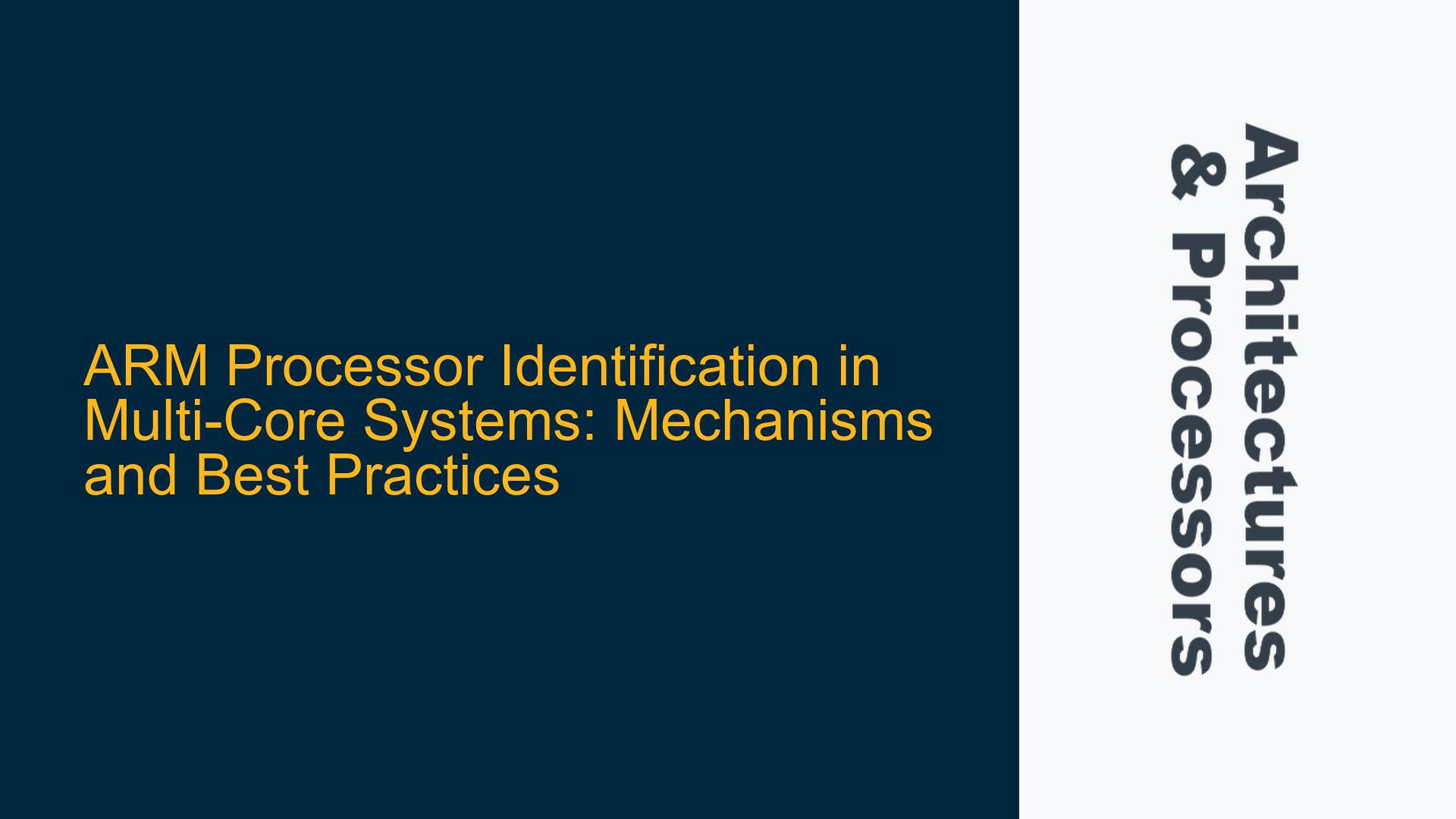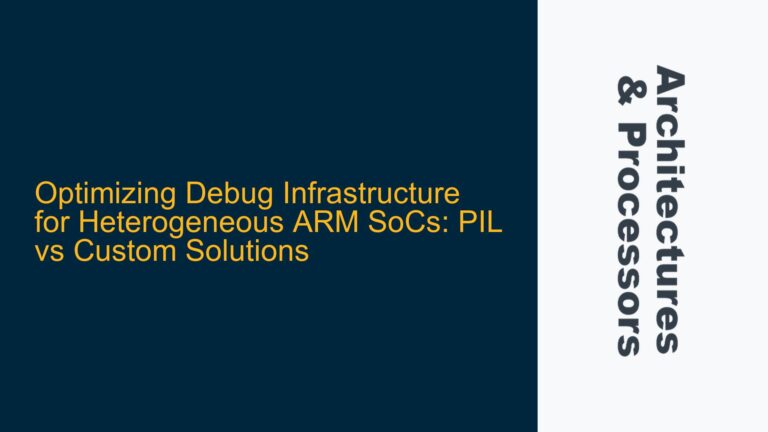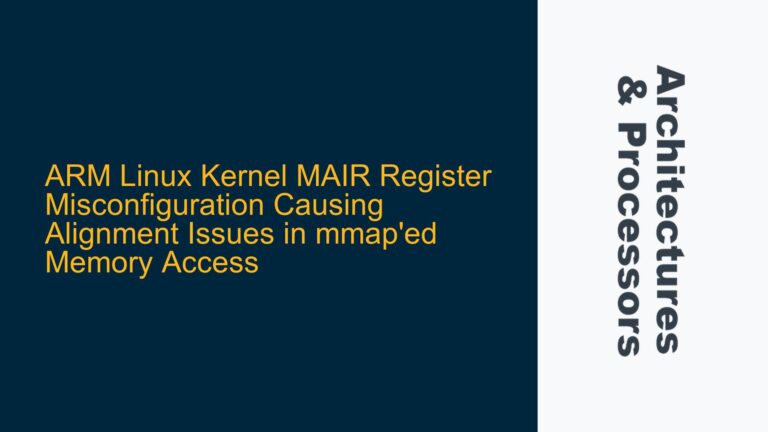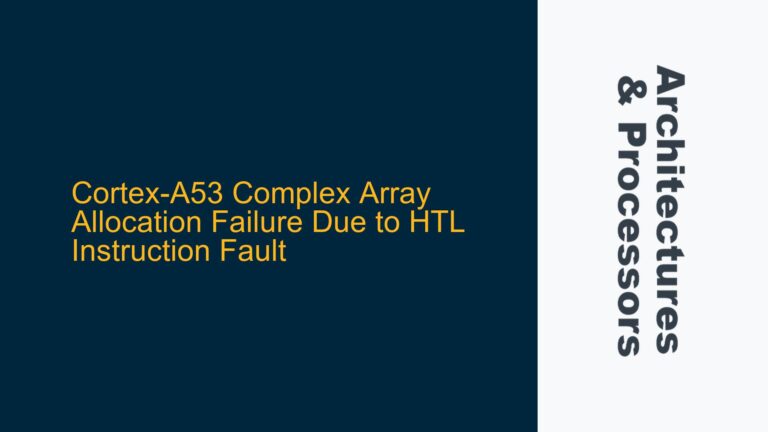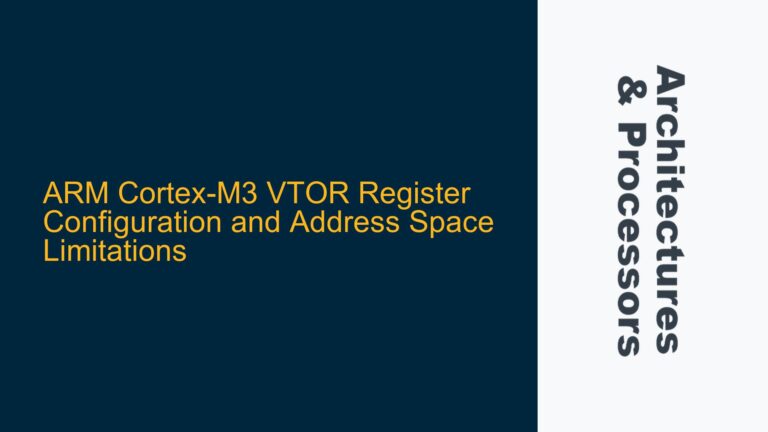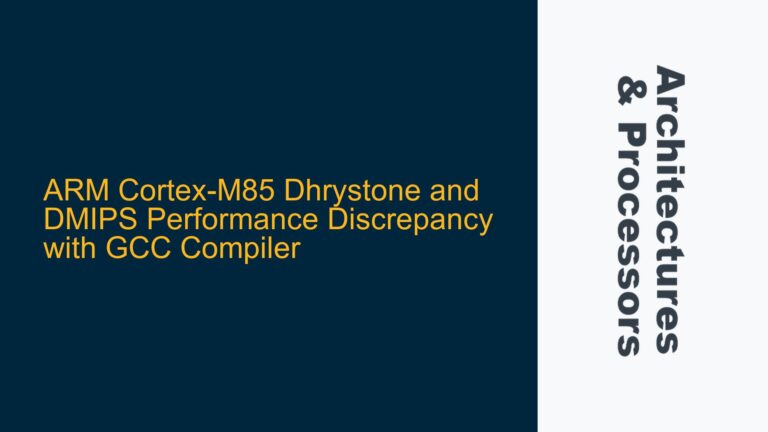ARM Processor Identification Mechanisms in Multi-Core Architectures
In multi-core ARM systems, identifying individual processors is a critical task for ensuring proper system initialization, task allocation, and runtime management. The ARM architecture provides several mechanisms for processor identification, each tailored to specific use cases and architectural variants. The primary registers involved in this process are the Multiprocessor Affinity Register (MPIDR), the Main ID Register (MIDR), and the CPUID registers. These registers serve distinct purposes and are available across different ARM architectures, including Cortex-A, Cortex-R, and Cortex-M series processors.
The MPIDR is a key register in multi-core systems, providing a unique identifier for each processor core. It encodes affinity levels that represent the hierarchical topology of the system, including cluster and core identifiers. However, the MPIDR is not universally available across all ARM architectures, particularly in some Cortex-M series processors where multi-core configurations are less common. In such cases, the MIDR becomes the primary means of identification. The MIDR contains a Part Number field that specifies the processor type, which can be used to differentiate between cores in heterogeneous multi-core systems.
The CPUID registers, while primarily used for feature identification, can also provide indirect clues about the processor’s identity by revealing its capabilities and architectural version. However, they do not provide a direct identifier like the MPIDR or MIDR. Understanding the interplay between these registers is crucial for developing robust multi-core software, especially in systems where different cores have specialized roles or capabilities.
Challenges in Processor Identification Across ARM Architectures
The variability in processor identification mechanisms across ARM architectures presents several challenges for system designers and firmware developers. One of the primary issues is the lack of a unified identification mechanism that works consistently across all ARM cores. The MPIDR, while powerful, is not available in all architectures, particularly in the Cortex-M series where multi-core configurations are less common. This absence necessitates the use of alternative mechanisms like the MIDR, which provides less granular information.
Another challenge arises in heterogeneous multi-core systems, where different cores may have different capabilities or functions. In such systems, simply identifying the processor type may not be sufficient; developers also need to determine the specific role or capabilities of each core. This requires a combination of hardware identification and software-based configuration, which can complicate the boot process and runtime management.
Timing considerations also play a critical role in processor identification. During system initialization, cores may need to identify themselves before certain peripherals or memory regions are fully configured. This can lead to race conditions or undefined behavior if the identification process relies on resources that are not yet available. Additionally, in systems with dynamic core enablement or power management, the identification process must be robust enough to handle cores coming online or going offline at runtime.
Cache coherency and memory consistency further complicate processor identification in multi-core systems. When multiple cores are accessing shared memory to determine their identities or roles, proper synchronization mechanisms must be in place to ensure that each core sees a consistent view of the system state. This often requires the use of memory barriers or cache maintenance operations, which can impact system performance if not implemented carefully.
Implementing Robust Processor Identification and System Initialization
To address the challenges of processor identification in multi-core ARM systems, developers must adopt a systematic approach that combines hardware features with software best practices. The first step is to determine the available identification mechanisms for the target architecture. In systems where the MPIDR is available, it should be used as the primary means of identification due to its granularity and ability to represent the system topology. The MPIDR can be accessed using the MRS instruction, and its affinity levels can be parsed to determine the core’s position within the cluster and system hierarchy.
In architectures where the MPIDR is not available, the MIDR becomes the primary identification mechanism. The MIDR can be accessed similarly using the MRS instruction, and its Part Number field can be compared against known values to determine the processor type. For systems with heterogeneous cores, this information can be combined with software-based configuration data to determine the core’s role or capabilities.
During system initialization, it is critical to ensure that the identification process is performed in a consistent and predictable manner. This often involves setting up a well-defined boot sequence where the primary core initializes essential system resources before secondary cores are brought online. The primary core can then use inter-processor communication mechanisms, such as shared memory or mailboxes, to inform secondary cores of their identities and roles.
To handle dynamic core enablement and power management, the identification process should be designed to be re-entrant and tolerant of cores coming online at different times. This may involve using atomic operations or hardware-assisted locking mechanisms to ensure that shared data structures used for core identification are accessed in a thread-safe manner.
Cache coherency and memory consistency must also be addressed to ensure reliable processor identification. This typically involves the use of data synchronization barriers (DSB) and instruction synchronization barriers (ISB) to enforce proper ordering of memory accesses. In systems with multiple cache levels, cache maintenance operations may be required to ensure that all cores see a consistent view of shared data.
Finally, developers should consider the performance implications of the identification process, particularly in systems with strict real-time requirements. Techniques such as lazy initialization or deferred identification can be used to minimize the impact on system startup time. Additionally, the use of hardware-assisted identification mechanisms, where available, can reduce the software overhead associated with core identification.
By combining these techniques with a thorough understanding of the target architecture’s identification mechanisms, developers can create robust and efficient multi-core systems that reliably identify and manage individual processors. This approach not only addresses the immediate challenges of processor identification but also lays the foundation for more advanced features such as dynamic task allocation, load balancing, and fault tolerance.
